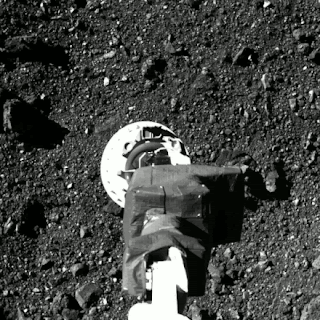How did life on Earth come to be? That's a question I've always wondered, and so has every other person on Earth. In my biology class this year, the origin and evolution of life was a major part of the curriculum, so many of my questions were answered. I learned that life on our home planet started around 3.5 to 3.9 billion years ago, when organic molecules like amino acids and nucleotides were synthesized, and then formed macromolecules, like proteins and nucleic acids, which became the building blocks for protobionts. These protobionts were the precursors to prokaryotic cells, with phospholipid membranes and RNA that could act as genetic material and enzymes. They could self-replicate and pass their genes to their offspring, which allowed for evolution over generations. Soon, archaic bacteria evolved, and now, a few billion years later, there are millions of different species of life on Earth. I found this all fascinating, but it left me with another question. How did those early molecules actually get to Earth?
Thankfully, an answer for that was also provided during my bio class. While we don't know for sure, there are a few hypotheses as to how they got here. In class, we focused on two main hypotheses: abiogenesis and panspermia. While abiogenesis looks to the early Earth's atmosphere and oceans for where organic molecules that were necessary for protobiont formation were synthesized (as shown possible by the Miller-Urey experiment), panspermia looks into the night sky and claims that entire existing life forms were transported to Earth from asteroids and meteorites. I was enthralled by the idea presented by panspermia. Having a life-long interest in space, I was attracted to this hypothesis since it meant that life on Earth could have come from outer space, and that we might all really be made of star stuff, just like Carl Sagan said.
 |
| Asteroid 101955 Bennu, taken by the OSIRIS-REx spacecraft (Credit: NASA/Goddard/University of Arizona) |
It turns out NASA is pretty attracted to the idea as well, and that they sent out a probe to an asteroid to try to find out more about it. In 2016, they launched the OSIRIS-REx spacecraft (short for Origins, Spectral Interpretation, Resource Identification, Security, Regolith Explorer) on a mission to asteroid 101955 Bennu, a rare B-type asteroid, to map its surface, study its gravitational effects and collect regolith samples to be returned to Earth. This class of asteroids is part of the larger C-type, or carbonaceous, class, but they're different because they're considered to be "time capsules" from the birth of the solar system that are thought to have broken off from larger planets or moons. B-types have remained largely untouched since the birth of the solar system, and are rich with carbon, minerals, chondrites that contain water, and organic polymers, which means they're the perfect place to look for extraterrestrial life. Bennu was chosen in particular for its abundance of carbon and silicates with water, which increases the likelihood of the presence of organic molecules.
 |
| An artist's rendering of the OSIRIS-REx probe approaching Bennu's surface to take a sample with its robotic arm (Credit: NASA/Goddard/University of Arizona) |
After spending two years orbiting the Sun after embarking on its journey, OSIRIS-REx encountered asteroid Bennu and got into orbit around it in December of 2018 to start mapping and studying its surface. Very early on, it discovered that clay was not only present, but an "intrinsic part" of the asteroid's composition, confirming that water was present in the regolith. Nearly two whole years later, on October 20, 2020, the probe did what it really went there to do: OSIRIS-REx descended very slowly to Bennu's surface and touched down for a few seconds to collect a regolith sample, marking NASA's first surface sample collection since the Apollo lunar landing missions half a century ago.
 |
OSIRIS-REx's robotic arm making contact with Bennu's surface and blowing nitrogen gas to collect regolith samples on October 20, 2020 (Credit: NASA/Goddard/University of Arizona) |
OSIRIS-REx won't be able to return its sample back to Earth until late 2023, but when it does, it could change how we view life on our planet and throughout the solar system. We will find out whether life can actually be formed and survive in outer space, which, depending on the results could provide very strong evidence for the panspermia hypothesis. These potential life forms wouldn't be anywhere close to the organisms that have evolved on Earth; they would likely be extremophile bacteria that have adapted to survive the beyond-freezing temperatures of space. A discovery like that would also open the door to the potential of life in other places in the solar system, like Mars or Saturn's moons Enceladus and Titan. While no breakthrough made by OSIRIS-REx's mission will change how life on Earth evolved and what it has become, it could tell us what life might have evolved from and where those life forms came from.
No comments:
Post a Comment